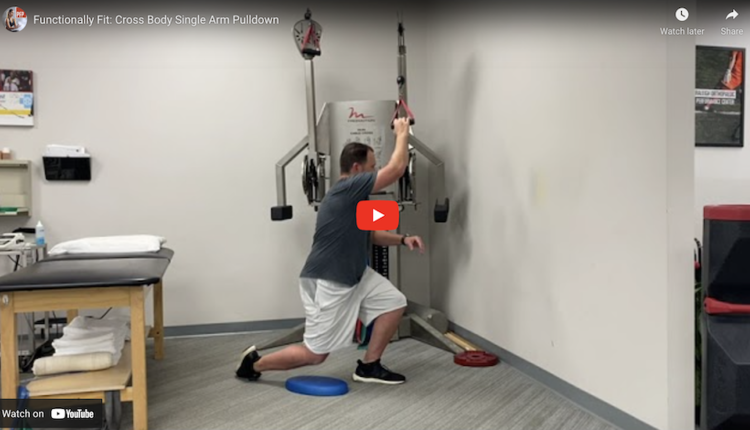Improving proximal hip stability and reducing frontal plane collapse is critical for protecting the knee. Poor frontal plane control often contributes to anterior knee pain, IT band syndrome, shin splints, plantar fasciitis and other injuries. This exercise will help emphasize closed chain stability, improve gluteus medium strength and enhance proprioception.

Execution: Begin standing on the right leg with 30-45 degrees of bend in the knee (left side of the body closest to the cable column). Choose a light weight. Pull the cable handle away from the machine and position it against the torso.
Prior to initiating any movement with the cable handle, be sure to engage the core to maintain a neutral spine angle and resist trunk rotation. Then, slowly extend the elbows pressing the hands away from the chest. Be sure to keep the arms at chest height and perpendicular to the torso at all times. Pause at full extension for 1-2 seconds and then slowly return to the start position.
Perform 10 repetitions and then switch sides. The stance leg should be furthest away from the cable column. Repeat for 2-3 sets. You may increase the difficulty by:
1) Increasing the hold time on each pause
2) Increasing resistance
3) Increasing the depth of the isometric squat
Regressions:
1) Reduce the resistance
2) Perform the exercise in a split squat position to master proper limb alignment
Application: This is an advanced version of a standard standing pallof press. Clients should be proficient in a traditional version prior to moving to an unstable one. This exercise is designed to promote anti-rotation core strengthening, but this variation is specifically designed to target gluteus medium strength and closed chain limb stability. It is effective for runners, athletes involved in cutting/pivoting sports looking traduce ACL injury risk and anyone who needs to address asymmetry in their proximal strength/stability.




















